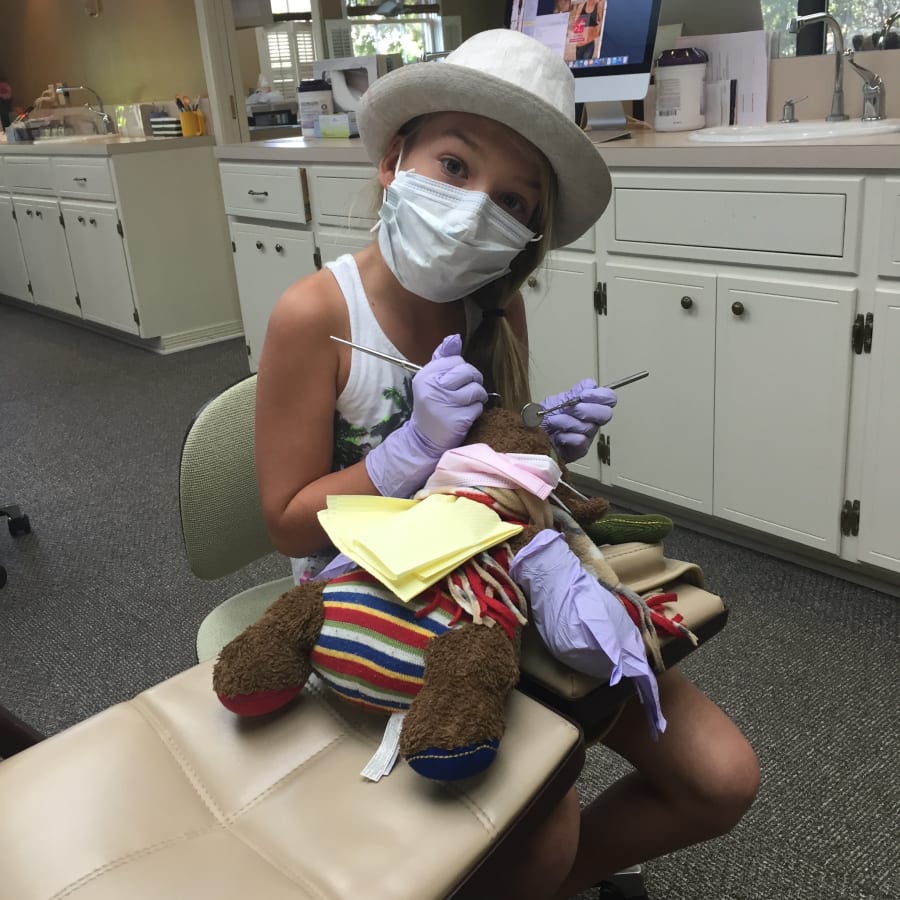
A Proactive Approach To Children's Orthodontic Care
As your child grows and develops, orthodontic issues could be developing too. Children should visit the orthodontist for the first time around the age of seven so that emerging issues can be identified and treated.
Early (Phase 1) orthodontics involves guiding proper jaw development to reduce the need for more extensive orthodontic treatment later in life. Rather than waiting until the teeth and jaws are fully developed and set in place, we can commence treatment early and work with your child's development for a straighter smile.
It can also help address many of the common oral problems that children face as they grow up – including speech and eating issues, snoring, teeth grinding, thumb sucking, and more.
At Douglas Orthodontics, we offer jaw growth guidance with palatal expanders, as well as Invisalign First clear aligners and traditional braces for our young patients.
Complimentary Initial Consultations for Children
If you or your general dentist have concerns about your child's orthodontic health, an assessment by an orthodontist may be in order. Bring your child in to Douglas Orthodontics for a free initial orthodontic evaluation.
Early intervention, also known as Phase 1 orthodontic treatment, is for children between the ages of five and 11 who have developing bite, misalignment, or airway problems.
Depending on the nature and severity of the issue being addressed, Phase 1 can include a variety of orthodontic treatments. The most common are palatal expansion, braces, and Invisalign First.
Your orthodontist will develop a customized treatment plan mapping Phases 1 and 2 in advance, to ensure your child's orthodontic care is as minimally invasive and effective as possible. Phase 1 also includes:
- Planning for the next phase
Phase 1 treatment is essentially done as preparation for Phase 2. Early orthodontic treatment plans are designed to minimize the need for more invasive or extensive treatment later on in life, such as the removal of permanent teeth, or surgical procedures to realign the jaw.
- Records to inform treatment
During your child's Phase 1 treatment, we'll keep copious records for reference in Phase 2. These records will note the type of appliances used, the duration of treatment time, frequency of visits and much much more. Records also consist of models of the teeth, X-rays, and photographs.
- A resting period
Following the completion of Phase 1 treatment, your child's permanent teeth are left alone as they erupt.
Retaining devices are avoided whenever possible since they can interfere with eruption. It is best to allow the existing permanent teeth some freedom of movement.
A successful first phase will have created room for permanent teeth to find an eruption path. Otherwise, they may become impacted or severely displaced.
- Monitoring tooth progress
At the end of the first phase of treatment, teeth are not in their final positions. This will be determined and accomplished in through your child's Phase 2 orthodontic treatment.
Selective removal of certain primary (baby) teeth may assist proper eruption during this resting phase. Therefore, periodic recall appointments for observation are necessary, usually on a six-month basis.

Phase 2 picks up where Phase 1 left off, once all the permanent teeth have erupted. This treatment refines details of the smile and bite with either braces or Invisalign Teen.
Phase 2 orthodontic treatment is typically much more moderate than it would be if Phase 1 was skipped over.
We think of it as fine tuning your teen's smile after all the groundwork was laid in Phase 1 – it's the finishing touch. Phase 2 treatment is also typically much shorter than Phase 1 (six to 12 months).
- Continuing on the path to a healthy smile
The goal of the second phase is to make sure each and every tooth is positioned in harmony with the lips, cheeks, tongue, and other teeth. Providing your teen with a smile that is healthier, easier to clean and more symmetrical.
- Phase 2 braces or aligner treatment
- Maintenance and retainers
Once Phase 2 treatment comes to a close, retainers will be created for your child. These will be worn on an ongoing basis to ensure that treatment results are maintained long-term.

Early Orthodontic Treatments for Kids
These are a few of the most common orthodontic treatment options for kids at Douglas Orthodontics.
Request Consultation
No referral needed – just complete the form below, and our scheduling coordinator will get in touch to confirm your child's appointment.